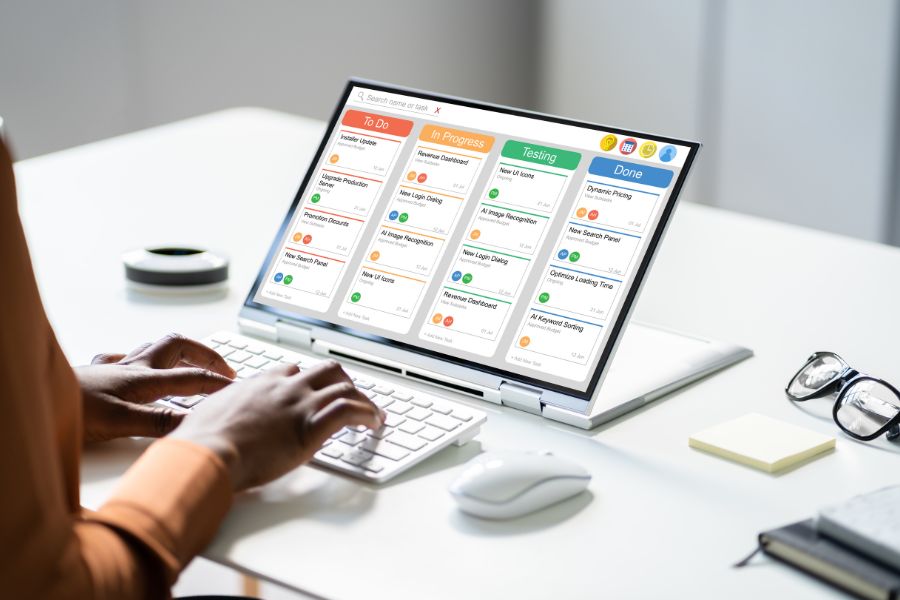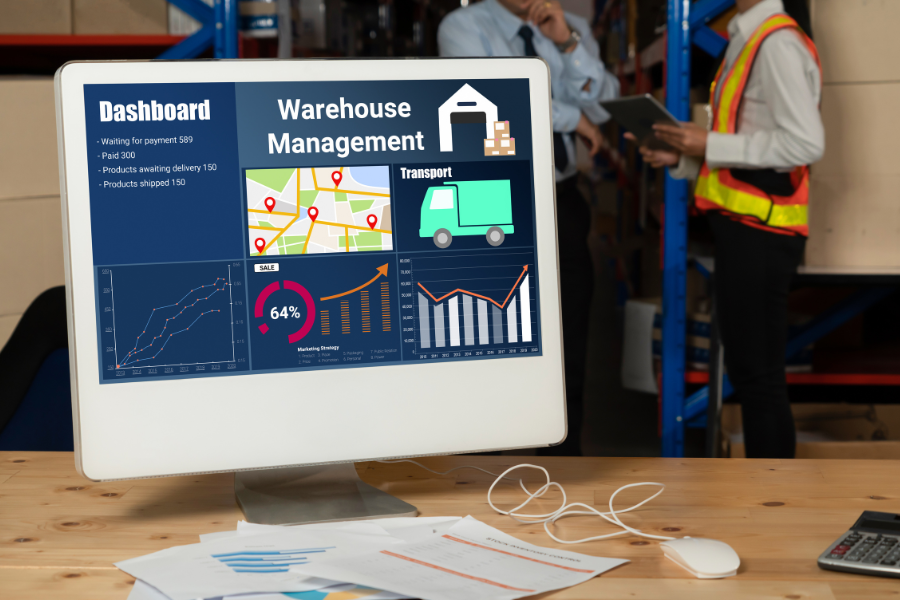As consumer expectations evolve, businesses are adapting to meet the growing demand for seamless digital and in-store experiences. Brands like Nike have pioneered omnichannel retail, offering flexibility through options like curbside pickup, which not only boosts sales but also strengthens customer loyalty. As we look ahead to 2025, several key omnichannel trends are set to transform the omnichannel landscape. In this article, we explore the rise of hyper-personalization, the impact of social commerce, and the role of AI-powered solutions in shaping the future of retail.
Highlights:
- Businesses are set to embrace hyper-personalization, expand into social commerce, and adopt AI-powered tools to create seamless and engaging customer experiences.
- Success lies in understanding your audience, strategically selecting platforms, leveraging AI to unify data, and delivering consistent, high-quality customer service across all channels.
Omnichannel Trends for 2025 and Opportunities
Hyper-personalization
Hyper-personalization is one of the omnichannel trends which helps online stores closely match their offerings to customer preferences. Through AI and data analysis, businesses craft tailored experiences. For instance, Netflix recommends shows based on viewing history, while Amazon suggests products aligned with past purchases.
Tailoring experiences isn’t without challenges. The “paradox of choice” shows that too many options can overwhelm shoppers, leading to decision fatigue or abandoned carts. A study published in the Journal of Personality and Social Psychology revealed that consumers are far more likely to buy when presented with six options rather than 24.
Emerging AI tools are addressing these complexities by deciphering customer behavior, fostering meaningful connections, and simplifying decision-making. Conversational AI, in particular, makes shopping more interactive and helps guide customers through the purchasing process.
Social commerce
Social commerce integrates eCommerce with social media platforms, enabling consumers to shop directly through networks like Instagram, Facebook, TikTok, and Pinterest. This approach taps into the growing role of social media in daily life and the demand for smooth shopping experiences across digital channels. This is one of the standout omnichannel trends in 2025 and is expected to continue reshaping the eCommerce sector in coming years.
As social commerce continues to gain traction, it has become an increasingly significant part of the eCommerce sector. In 2023, sales through social networks accounted for an estimated 18.5 percent of total online sales, and this figure is expected to keep growing in the coming years.

Showcasing products in a natural and relatable way creates a more engaging shopping experience. Influencers and user-generated content play a key role in shaping buying decisions, helping businesses expand their reach and build stronger customer relationships.
What sets social commerce apart is its convenience. Shoppers can make purchases without leaving their social media platform, aligning with their preference for personalized and straightforward interactions.
AI-powered solutions
As customers engage with brands through email, social media, phone, and in-store visits, AI plays a key role in making these interactions consistent and connected. Omnichannel AI systems are omnichannel trends which allow businesses to track preferences across platforms and deliver tailored, relevant interactions every time.
Companies adopting omnichannel approaches often experience greater customer loyalty. Aberdeen reports a 91% higher year-over-year increase in retention rates, and a Harvard Business Review study notes that 73% of shoppers use several channels during their journey.
AI connects interactions across different touchpoints. A customer might start shopping on a mobile app, receive tailored recommendations by email, and complete the transaction in-store, with AI integrating data from each step. For instance, an in-store suggestion could reflect the customer’s online browsing history.
AI also links experiences across banking platforms, from mobile apps to in-branch visits. A customer initiating a loan application online can access the same information at a branch or when contacting support, creating a smoother process.
Customer support benefits as well, as AI synchronizes conversations across platforms. A query starting on social media can continue on a call without the customer repeating details. For example, an agent receiving a support call can access the complete interaction history, enabling informed assistance.
Creating A Successful Strategy to Adapt Omnichannel Trends
Developing an omnichannel strategy for 2025 omnichannel trends relies on a mix of technology and customer insights to create a connected experience across all interactions.
Understand your audience and select key channels
Start by defining your ideal customer and segmenting your audience using data from sources such as website analytics, social media, and purchase history. This analysis provides insights into preferences, behaviors, and challenges.
Once the data is gathered, focus on the most relevant channels for engagement. Identify where your audience spends time, whether through mobile platforms, email, social media, or in-store visits. Tracking the customer journey across these touchpoints reveals gaps and helps refine the process, improving transitions and driving satisfaction.
Integrate AI and unify data
Using AI tools can refine marketing efforts, manage inventory, and connect digital and physical interactions. Data flow across touchpoints, such as physical stores, websites, mobile apps, and social media, creates a complete customer view. This approach allows businesses to adapt omnichannel trends and make smarter decisions and create meaningful engagements tailored to individual needs.
Prioritize consistent customer service
Delivering high-quality support across all channels builds trust and strengthens brand loyalty. Chatbots, social media interactions, and in-store assistance should all provide the same level of care. Tools like WhatsApp, paired with AI, offer real-time and personalized solutions that improve the customer experience while enhancing the business’s reputation.
Role of ConnectPOS in Adapting to Omnichannel Trends
ConnectPOS is an omnichannel retail POS which empowers businesses to align with omnichannel trends by smoothly integrating online and offline operations. The platform offers advanced features to enhance customer experience, improve operational efficiency, and adapt to various sales channels.
- eCommerce Integration: ConnectPOS bridges online and physical stores by enabling functions like buying online and completing payments, refunds, or exchanges in-store. The platform supports real-time inventory synchronization, ensuring accuracy between channels. Various payment methods and tax calculations cater to both local and international transactions.
- Mobile-Friendly Features: The PWA (Progressive Web App) enables on-the-go functionalities such as barcode scanning for product information or order placement. Personalized promotions can be sent to nearby customers, driving immediate sales opportunities.
- Social Commerce Capabilities: The system recognizes customers across different touchpoints, displaying targeted promotions and messages on social networks. This integration fosters personalized engagement, boosting sales through relevant interactions.
- In-Store Innovations: AI-powered facial recognition grants shop assistants access to customer details and purchase histories, enabling tailored recommendations that improve satisfaction and drive sales. Integrated stock visibility connects online product availability with in-store inventory, delivering accurate and transparent information across all locations.
- Hardware Accessibility: ConnectPOS is compatible with a variety of devices, including POS machines, desktops, laptops, tablets, and mobile devices, ensuring flexibility and ease of use in diverse environments.
- Streamlined Checkout and Operations: The intuitive interface and three-step checkout process minimize transaction times and enhance user experience. Integrated tools eliminate redundant tasks, streamlining workflows and improving efficiency.
- Enhanced Customer Experiences: Customers enjoy the convenience of purchasing online and retrieving items in-store, facilitated by a straightforward order lookup system. The platform supports diverse payment options, including cash, cards, gift cards, split tenders, and layaways, ensuring a flexible and accommodating checkout process.
- Real-Time Updates and Promotions: ConnectPOS synchronizes stock updates between systems and simplifies discount implementation. Businesses can create in-store-exclusive promotions like Buy X Get Y or cart-wide discounts.
- Mobile-Optimized Retail:The PWA app supports notifications for new arrivals or promotions and allows customers to shop and self-checkout using barcode scanning on mobile devices.
ConnectPOS provides a comprehensive toolkit for creating a unified retail experience across channels, enabling businesses to meet the demands of modern omnichannel commerce.
FAQs: Omichannel Trends
- What is hyper-personalization in omnichannel strategies for 2025?
Hyper-personalization refers to using advanced data analytics and AI to deliver highly tailored experiences to customers based on their individual preferences and behaviors across various channels.
- How does social commerce impact omnichannel trends?
Social commerce enables businesses to sell products directly through social media platforms, creating a seamless shopping experience across social channels and improving customer engagement.
- What role do AI-powered solutions play in omnichannel experiences?
AI solutions enhance omnichannel experiences by automating customer service, personalizing marketing efforts, and analyzing customer data to provide consistent and relevant interactions across all touchpoints.
- How can businesses personalize customer experiences across all channels?
By collecting and integrating customer data across touchpoints, businesses can tailor content, product recommendations, and offers to each customer’s preferences.
Conclusion
As we look to 2025, omnichannel trends and strategies are vital for businesses of all sizes. For small and medium-sized businesses and enterprises alike, adopting the right technologies and gaining a deeper understanding of customers is key to making a lasting impact. Omnichannel goes beyond the tools or channels – it’s about crafting a unified experience that makes each interaction personalized, intuitive, and smooth.
To take your omnichannel strategy to the next level, connect with ConnectPOS and transform your retail experience today. Contact us now!



